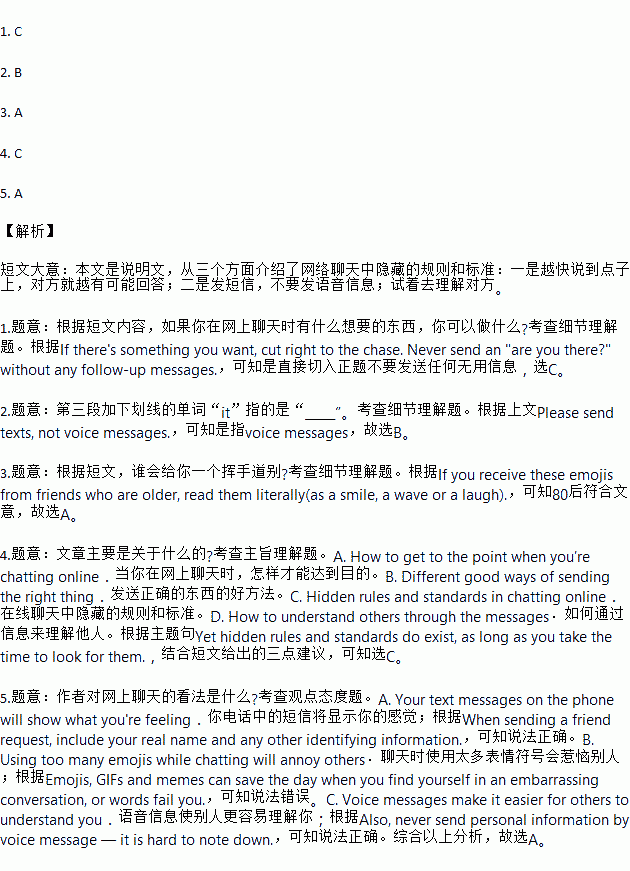题目内容
Chatting online is now a national pastime in China, especially among the post-90s generation. To some people, however, online chats can seem like a kind of polite conversation. Yet hidden rules and standards do exist, as long as you take the time to look for them.
Get to the Point.
When sending a friend request, include your real name and any other identifying information. Remember, everybody's time is precious. If there's something you want, cut right to the chase. Never send an "are you there?" without any follow-up messages. The quicker that you get to the point, the more likely the other person is to reply.
Send the Right Things.
Please send texts, not voice messages. It might be easier for you to speak than type, but what about the person on the other end? They may be unable to listen to a 59-second message right now. Also, never send personal information by voice message — it is hard to note down. Emojis, GIFs and memes can save the day when you find yourself in an embarrassing conversation, or words fail you.
Try to Understand.
You can always judge a person's mood by their text messages. If the person you're talking to says "good night" or "I'm going to take a shower" that's probably not what they're actually going to do, it is just an excuse to stop talking to you. If someone hesitates for longer than three seconds before saying "yes", they probably really mean "no". If you receive these emojis from friends who are older, read them literally(字面意思) (as a smile, a wave or a laugh).
For the post-90s generation, however, they could be speechlessness.
1.What can you do if there’s something you want when you’re chatting online according to the passage?
A. Send an "are you there?" without any follow-up messages.
B. Send a friend request without any other identifying information.
C. Send it directly without any other useless messages.
D. Send your real name without any follow-up messages.
2.The underlined word "it" in Paragraph 3 refers to"_________".
A. personal information B. voice message
C. Emojis D. GIFs
3.Who will send you a wave to say Goodbye according to the passage?
A. the post-80s generation B. the post-90s generation
C. the post-2000s generation D. the post-2010s generation
4.What is the passage mainly about?
A. How to get to the point when you’re chatting online.
B. Different good ways of sending the right thing.
C. Hidden rules and standards in chatting online.
D. How to understand others through the messages.
5.What is the writer's opinion about chatting online?
A. Your text messages on the phone will show what you're feeling.
B. Using too many emojis while chatting will annoy others.
C. Voice messages make it easier for others to understand you.
 轻巧夺冠周测月考直通中考系列答案
轻巧夺冠周测月考直通中考系列答案

 B.
B.  C.
C.  D.
D. 